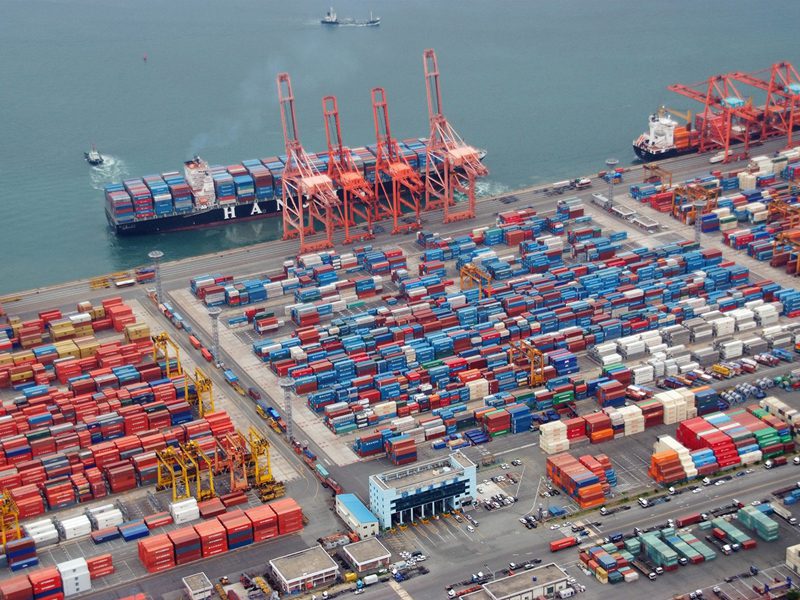Photo: Hanjin Shipping
By Rishaad Salamat and Kyunghee Park
(Bloomberg) — The fall of South Korea’s biggest container line Hanjin Shipping Co. is similar to the 2008 collapse of Lehman Brothers Holdings Inc. and has materially impacted the shipping industry, Seaspan Corp. Chief Executive Officer Gerry Wang said.
Seaspan, the Hong Kong-based container-ship leasing company that has three vessels chartered to the distressed line, is evaluating all options and examining systemic risks resulting from Hanjin’s bankruptcy filing, Wang said in an interview with Bloomberg Television. In June, Wang had rejected Hanjin’s requests for charter-rate cuts before the shipping line filed for court receivership last month.
“The fallout of Hanjin Shipping is like Lehman Brothers to the financial markets,” Wang said. “It’s a huge, huge nuclear bomb. It shakes up the supply chain, the cornerstone of globalization.”
With about 93 ships, including 79 container vessels, stranded at 51 ports in 26 countries, the gridlock at Hanjin has disrupted global supply chains during “peak season” when stores in the U.S. stock up before the year’s busiest holiday shopping season. The owner and Hanjin’s parent are in the process of injecting funds to help the beleaguered company offload cargo stuck aboard many ships and break the impasse.
The impact on Seaspan has been small, Wang said, adding he is seeing a “silver lining” as freight rates improve in the short term. The vessels he has leased to other shippers are more than 90 percent full ahead of the holiday season, he said. Seaspan has an operating fleet of about 90 vessels.
“There’s a tremendous flight to safety,” he said. “Freight rates have shot up like crazy over the short term, the long term I don’t know. But one thing’s for sure: This fallout will help demand and supply.”
Hanjin Chairman Cho Yang Ho completed infusing 40 billion won ($36 million) to help the tottering unit, three days after group affiliate Korean Air Lines Co., the biggest shareholder, approved pumping 60 billion won. A former chairwoman of Hanjin Shipping pledged 10 billion won on Monday from her personal wealth as relief to the company. The South Korean government estimates Hanjin Shipping needs at least 600 billion won to cover unpaid costs like fuel and cargo handling.
Stay Orders
Hanjin Shipping in exploring the option of bringing some of the stranded ships in nearby countries to Busan port, the Port Authority of Busan said late Monday. Shares of the company have slumped 65 percent this year, compared with a 1.9 percent gain in the benchmark Kospi index.
Following a U.S. bankruptcy court ruling last week protecting Hanjin’s assets from creditors, the company said Tuesday it got similar orders that shield its possessions from seizures in Japan, U.K. and Singapore. It is also seeking such decrees in other major nations including Germany, Spain and Italy, it said in an e-mailed statement.
“Hanjin Shipping will put all efforts to resolve the supply chain disruptions as soon as possible,” the company said in the statement.
In Long Beach, California, Hanjin Gdynia is in line to berth Wednesday after Hanjin Greece unloaded and cleared the way, and will be followed by Hanjin Jungil, the company said separately in a text message.
Hurt in an industry marked by overcapacity and slowdown in global trade, Hanjin Shipping filed for bankruptcy protection on Aug. 31, and a court in Seoul is hearing the case and will weigh options for a reorganization or liquidation.
“At the end of the day, the industry has been money losing,” Wang said. “For like any industry, for long term, it’s just not sustainable.”
–With assistance from Karolina Miziolek.
© 2016 Bloomberg L.P

 Join The Club
Join The Club











